ARTICLES FOR KINO
KINO (Kuching In & Out) is a bi monthly magazine paid for by advertising published and edited by Marian Chin. The text here is as published. The spreads are as published or drafts by the author. All photography is by the author or sourced from Wiki Commons.
For the beginning of the relationship with KINO see ~
https://anthonyfward.wordpress.com/2013/07/14/sathuday-aurora/
Secret Men’s Business
In a faraway land, long ago, there lived a king and his fair queen. Many years they had longed for a child, and finally their wish was granted. A daughter was born, and they called her Aurora.
Narrator : Sleeping Beauty – Walt Disney 1959
HAIR TODAY GONE TOMORROW When I poke the internet with the magic words ‘Aurora Hotel Kuching’ it delivers meagre, but tantalizing evidence of that legendary place’s existence, relative to its importance to the people who remember it. Particularly those Kuchingites for whom it was the touchstone of sophistication, the meeting place to go to ~ in the biggest little city in the world. Memories of the Aurora however do litter Sarawak like windfall apples. First hand memories, across two and three generations. Second hand memories. And there’s the ‘My father told me my grandparents went ballroom dancing at the Aurora…’ sort of memories. Memories that illuminate the importance of this place; as the place to be for people.
HAIR CONDITIONING When I asked Mr Chin what was it about the Aurora Hotel that attracted people to it, his answer is direct and simple – “Air conditioning!” Yes, the Aurora had this new technology*. It had 48 air conditioned rooms. A restaurant. A bar. A ballroom… and a barbershop. It was an enthusiastic community of people dedicated to creating the first ‘international standard hotel’ in Kuching. It was modernity. Chin Fui Kim was 19 in 1962 when he joined the staff of the Aurora Barber Parlour as apprentice to ‘Mr Chang’, the imported Hong Kong barber. The master of a 3 chair salon and overseer of service to its clientele of foreign guests, colonial administrators and any Sarawakian local or visitor, who put high value on consistency in personal care and service. Available for two Sarawak dollars. ‘Air conditioning and hygiene!’ A hard to beat combination according to Mr Chin.
SHORT HAIR LONG DAYS Despite long hours, 8.00 am until 9.00 pm, Mr. Chin remembers a hard working life made pleasurable by being in the good company of fellow workers. So good that when he left in 1988, to identify his new business with the Aurora Hotel as the Chin Liew (Aurora) Barber Parlour, had as much to do with those good memories as good business. Still ‘The Barber’ at 70 he continues to provide the traditional male ‘de-barbarianizing’* service with an absolutely correct degree of rigorous gentility… and hygiene. Inclusive of his crisp surgical white coat, mask, gently precise manner and surprisingly pop accented cloths draping you during the procedure in chairs that are exemplars of a 70’s modernity. (Takara*)
A CLOSE SHAVE Still using the leather stropped straight edge razor, hot towels, shaving with brush and soap. Cutting with scissors, comb and clippers (albeit now electric ones). Finishing with fragrant astringent and talc. His tariff card, framed under the vintage clock offers a finite variety of services in Chinese and English. No longer two Sarawak dollars, but always affordable. You don’t make an appointment for a barber usually – but just turn up. Regularly. If you wish to be seen by Mr.Chin you may have to wait. While three splendidly modern chairs, no waiting may be an implicit promise, there’s always some waiting, and usually only two barbers. You wait with some pleasure, making eye contact with other ‘patients’, sharing in the conversation overheard and being politely engaged over someone else’s lathered bristles – skimming the reading material available. Master Q. Newspapers. Appropriate magazines. Quietly enjoying the smells. The sounds. It is all part of the therapy that is part of that ‘secret men’s business’ called going to the barber.
THANK YOU. YOU’RE WELCOME Mr Chin has barbered 3 generations of Ahmad Azuar Zanuddin’s family. Firstly his grandfather then father, at the Aurora Hotel from 1974 and since 1988 at 5-G BGN Chong Kok Moi, Jalan Rubber. A different address perhaps, but it is still the Aurora Barber Parlour,where Mr Chin is the man to see for fine barbering and fine memories of a magical place and time –
Caption: The Aurora Hotel, Kuching 1956 – 1995. The author was 13 years old when the Aurora Hotel opened, with a new technology – air conditioning; far from Kuching in Melbourne where B&W Television and The 1956 Olympic Games were being woven into the memory of an also not so big, Australian city of 1.5 million people.
AfW
Precious.(Tatap)
Anthony Frederick Ward
This small silver leaf protected and celebrated the worth of the female in traditional culture.
How much can you learn from a beautiful object just by holding it? Imagining it in the hands of the people who it was created for can take you further. Each piece of new information revealing more . For Nelson Tan, living with your cultural heritage is the guiding principle and practice of sustaining and perpetuating a culture’s uniqueness in our culture homogenizing world. CAPING (Modesty disc) were introduced into Malay culture from the 7th to 13th century during the Srivijaya Empire in Sumatra.The tying of caping over the genitalia to protect the child from evil spirits was performed by the Bomoh or shaman or another who knew the ritual, with ties of different material to denote status. The practice continued in Peninsula Malaysia until the reign of Sultan Muhammed IV (1899-1920).
About 57.5mm x 50mm this simple, beautiful to the eyes and finger tips silver object, with its sweet-heart shape and mysterious decoration has a story that it can be coaxed to at least partially reveal itself. How old is it? The form, patina and wear and tear suggest quite old. Possibly 120-150 years. It’s 80 grams of silver are worth 224 RM at the price of silver today. A significant cost to the Iban longhouse for who it was made, probably from pure silver Dutch coins so long ago. Alongside Iban coconut shell equivalents pictured, from a slightly later period, this significance is more apparent. Perhaps copying. Perhaps based on their own cultural knowledge possibly a Malho craftsman, a Tukang Tinggi, who may have learnt the repoussé technique from emigrant Chinese silversmiths, has made this artifact, embedding in it spiritual meaning readable to someone who understood the leaf’s role . At some time in it’s long life, it has been broken almost in half, and been repaired. Again its spiritual not material value is reinforced by the care taken conserving it. Not delicately done but by just fusing the two pieces, at the cost of some of its detail. Importantly it has not re-joined the world silver pool to reappear anonymously as rings. Chains. A belt buckle. Because it’s beautiful of course, but to the people it was fashioned for, it’s essence was always more precious than its material worth. To conserve it was an act of cultural necessity for them. Of respect for culture. Not pride in the lines of the design. This is not a piece of decorative jewelry to be worn for vanity. I asked three sophisticated indigenous colleagues. What is it? No one had seen anything like it. But they were all born in the second half of the 20th century after caping had ceased to be practiced anywhere in Malaysia. None could interpret its imagery. Is it a ferocious face? Distorted by a repairing process into a grimace. Are those spiral flowering fronds? Possibly jasmine or clove. And in the bottom tip – is that a bamboo shoot? In the scale of the design it has the greatest detail and despite its smallness, very obvious significance. Is it a yoni? All framed by pearls of silver. Traditionally flowers embellished caping for a female child. A cross for a male. Both were sometimes included to confuse the spirits. A caping is referred to as a modesty disc. This one for a female is sufficient in itself to clothe, and protect the child from one year old till they are able to dress themselves. To protect them from all that may harm their ‘soul’ or sagamant and celebrate their importance to the family and the community they are a precious part of.
AFW is a designer who collects many things. Amongst them some objects of material worth but most often artifacts where the true value, in his eye, is its significance in the lives of the peoples whose needs it fulfilled and the crafts people who made it. If you would like to contribute in any way to what is his ‘life’s work’ please contact AFW through KINO.
Caption : All pieces pictured are in The NFS collection of Nelson Tan. Photography by the author.
Once Upon A Time In China…
A 1260 year old story celebrating filial love and loyalty
is retold in the gold and silken embroidered threads of
this 150 year old family banner. By Anthony Frederick Ward
CAPTION :
The banner is from the Nelson Tan NFS Collection. Photography by the author.
CAPTION :
Women preparing silk, painting by Emperor Huizong of Song, early 12th century. (Wikimedia Commons)
Cultural exploration carries with it all the same anticipation, excitement and reward of discovery as geographers of old experienced.The map for this journey is another treasure from the NFS collection of Nelson Tan. A banner (50cn X 175cm) in which intricate silk and gold embroidery and once vibrant colour emblazons a complex story in pictures and symbols.
A perfect picture that is worth a thousand words….
No human cultural tradition transcends time and nations more persistently than the telling of stories to ordinary folk, communicating wisdom and knowledge.
From the sheltered wall of the cave before language to the HD flat screen stories are retold perpetuating human values and ideals to all who congregate to hear; to see them.
A medium for the storytelling arises from the culture. Coming from a collective consciousness of folklore the story evolves to its demands and the expectations of its audience.
The great Tang general Guo Ziyi 郭子儀 697-781 was a good and loyal man serving three emperors, bringing peace to the empire. At the end of his life at the behest of the Jade Emperor he was brought to Heaven where he resides as the God of Prosperity and Happiness.
The General had seven sons and eight daughters …
The Emperor DaiZong 唐代宗 727-779 seeking to reward his aging General for his service to the Empire gives his beloved, wilful daughter to be the wife of the General’s sixth son, due to tragic circumstances, now the General’s successor.
The Princess ShengPing 升平 is headstrong and royal. The son Guo Ai 郭曖 till that time carefree without the expectations and demands arising from being his father’s successor.
Their relationship is not without friendship and a growing mutual love and affection. But marriage between a royal family and a common one however ennobled by the deeds of the General, is fraught by challenges.
Arguing with ShengPeng the worth of their fathers Guo Ai utters treason in his father’s eyes, who is duty bound to place him at the Emperor’s mercy, with beheading a possible outcome; ignoring ShenPeng;’s pleading for his ignoring ShenPeng;’s pleading for his life. In full knowledge of the incident the emperor’s wisdom… 不痴不聾,不作家翁。兒女子閨房之言,何足聽也! (When the son and daughter fight, it is better as old men to pretend to be deaf!) reunites the tumultuous couple.
On the occasion of the aging General’s 70th birthday the Princess chooses to not attend celebrations. Angered at ShengPing’s lack of respect for his parents, while drunk Guo Ai strikes the Princess. The General knows that striking the daughter of the Emperor must be punished, imprisons his own son. Once again ignoring ShengPing’s pleading for the life of the man she loves, his brings him before the Emperor for judgment and possible beheading.
Again wisdom and love prevail and the couple are reunited to age, prosper and be happy together; honouring their families united, in an Empire prospering in peace.
These events in an ancient capital became folklore as 醉打金枝 Striking The Princess (While Drunk) – re-emerging in popular media since about 760 AD.
Retold in the early repertoire of the Beijing Opera. Retold several times as film and a television series with glittering stars more recently. Retold in precious silk and gold thread on a banner from China 150 years ago .
The banner was hung across a main doorway on those auspicious days celebrated in a family home. Greeting guests and blessing the family gathered, who preserved and displayed it.
The intricately embroidered panel is not Malaysian in origin, although there are many beautifully made ones that are. The artisan weavers and embroiderers who created it painting with a needle, were Chinese. The family who 150 years ago commissioned it were Chinese. The workshop where it was made was accessible to the original family home in China.
How is it that it was found in Kuching? Showing the wear and tear of a long life, it’s survival confirms it’s worth and significance in many hands, that made it and that carefully unfolded and displayed it with pride at many significant family celebrations through generations.
The pursuit of a better life for the family was the motivation for the Chinese diaspora in all eras. But to carry this valuable, fragile and significant family treasure on a journey to what was once upon a time a new world, far away, suggests it was a family’s journey to a new and hopefully better future. A journey resulting in a small branch of a giant cultural tree encoded with the order and civility of dynastic China, it’s stories and celebrations, taking root in alien soil, fusing with it to prosper and be enriched anew.
Folklore is the underlying human story, a spontaneous human
invention that from a narrative’s inception survives and flourishes across time through its retelling.
Perhaps out of necessity, it has been relinquished by those who caused it to be created, ceasing to have to go to work every family celebration doing what it was made for. Without conservation, it will return to the magic dust that silk worms, gold smiths and a small army of weavers and embroiderers first brought together in this panel. But the story will last … forever after.
BOX:
Golden threads amongst the silk.
Whilst silk fabric was known elsewhere in the old world as early as 2000 BC, taking the protein fibre directly from the cocoon of the moth Bombyx mori is a uniquely Chinese technique dating from the Zhou dynasty 1125-255 BC.
A lowly art form in its country of origin, Chinese artisans embellished this lustrous fabric with silken embroidery – cixiu or huixiu – to clothe Emperors and the highest dignitaries. Every task in the manufacture of an embroidered silken artefact was the specialisation of separate embroiderers – guxiu shifu. Silk was limited by imperial decree to the ruling classes until the Song dynasty but a protected, valuable trade good with the world outside its borders.
Gold, the rarest, most valued of metals, in the hands of the embroiderers brought its scintillating brilliance and worth, a heaven sent blessing to bestow on the piece’s earthly owners and patrons of its creation.
CAPTION: All pieces pictured are in The NFS collection of Nelson Tan. Photography by the author
AfW
Kuching
November 6 2013
新年好
A Personal Zodiac
As the year of the Serpent has uncoiled so also has my understanding of the layered complexity and worth of the Chinese Zodiac.
While born in another place and culture in the year of the Goat (1943) a new awareness of my own inner diversity and a connection to the characteristics of each of the mythic beasts has emerged, and the universality of its wisdom been revealed. As an image maker and writer, advantaged in my reflection by a craft and language that are not at all Chinese, a cultural fusion has taken place. At the end of one year I humbly share with all who come here this discovery; as a vehicle for my best wishes for the year that is to come.
AfW An Old Goat with an Inner Horse Kuching January 2014
Heaven blessed this beastie, truly Royal;
To be Man’s guiding strength and loyal.
Nature’s gift to him – an unflinching heart
With the eye of a deadly speeding dart.
But conflict’s clamorous call slowly fades
Leaving him standing, watching parades.
https://www.behance.net/gallery/16453687/12-EYOTS-IN-RIVER-TIME-%28DRAFT-2%29
上天保佑这个小魔鬼,
真正的皇家; 是男人的引导力量和忠诚。
大自然的礼物给他 –
一个坚定的心脏 用致命超速镖的眼球。
但冲突的吵闹呼叫慢慢变淡 离开他站着,
看着游行。
During 2014 the complete suite of zodiac images and personal reflections are to be collated and internationally published collectively as a book and exhibition together with two other designers from the Americas and Australia exploring other cultural bestiaries.
A Bedtime Story?
By Anthony Frederick Ward
Do you like a hard… or soft pillow?
It might depend on when… and
where you grew up.
We have each of us been asleep possibly one third of our lives.
Humankind for one third of all its time on Earth.
Something to support our heads when we sleep, has always
been anatomically necessary.
In China ‘headrests’ evolved from smooth stones with a concave surface. By the late sixth century, they were rectangular blocks made of jade, bronze, ceramic or wood depending on your social status.
Woven split bamboo pillows were common but they were generally all hard with a concave top surface to hold the head and had a stable base. Before sleep a pillow’s hollow interior could contain fragrant leaves, flowers or even incense to sweeten dreams. Porcelain pillows were made from the 10th to the 14th century till they were gradually replaced by pillows of other manufacture as a European-style stuffed pillows were introduced.
Decorated with animals, plants, people, mountains, geometric motifs and cultural stories in colourful glazes; many shaped as creatures, small children, wagons and clouds.
To the modern eye the intricately decorated and moulded forms don’t appear to be pillows or more correctly headrests. How could anything so hard be comfortable.
European observers called them ’opium pillows; because opium users liked to use a hard pillows claiming that after smoking opium for a while, even a hard pillow felt “like a cloud.”
In the late 19th early 20th century they still were still made as decorative ceramic trade ware more for a traveler’s curiosities cabinet rather than the bed.
True Chinese pillows have long ceased to be used except in historical re-enactment on film. They are however collected. as ceramics or antiquities because of the great worth in their craftsmanship and their place in the long story of Chinese culture.
Despite the therapeutic…and possibly spiritual values of the ‘hard’ pillow softness , quality of the fabric and the hygiene of the place we lay our head are modern priorities.
The very old English word ‘pillow’ has always meant ‘to cushion’. Its function to separate the head from underlying hardness and the more important function of elevating the head. keeping it horizontal, the neck relaxed and air ways unconstricted.
The pillow evolved in European culture from a pad of soft grass or leaves on hard ground to a roll of animal skins to a plain or embellished fine fabric case firmly filled with softness.
Handmade pillows were the norm in Medieval Europe and when the new world opened a European way of sleeping followed the first explorers. In mid-19th century Britain, fuelled by the Industrial Revolution the growth of cities and an increasingly global textile industry the way pillows were made changed. Bed linen became cotton – or Manchester (after the city where it was woven).
From painstakingly hand stitched and embroidered cases filled with cushioning softness once the privilege of landed aristocracies became machine-made hygienically changeable and often machine embroidered cases for a soft inner ‘pillow’ of goose down or feathers; available to all.Soon the new discovery rubber displaced fast disappearing feathers although into the twentieth century a bride’s dowry might still contained the finest examples of a sewing and embroidery craft as her gift to the marriage.
In ancient Egyptian, African and Chinese cultures the head was understood as the home of the spirit. A sleeping head deserved therefore more than simple cushioning comfort in sleep however luxurious. Finely carved personal headrests are still integral to the identity of young men in some African states – functioning as stools they are carried everywhere.
Gilded wooden and carved stone headrests finely carved and embellished are found as funerary furniture in the tombs of the Pharaohs.
Photographs below and on previous pages by the author are of ceramic late Qing ‘pillows’ and a locally made bamboo discovered in Nelson’s Gallery, the Main Bazaar Kuching. Images on facing page sourced from http://commons.wikimedia.org and are in the public domain. Embroidered pillowcase. Palestinian refugees in Jordan 20th Century (below) Self portrait and pillow.1493 Albrecht Durer (top left) A Woman in bed. 1647 Rembrandt van Rijn (top middle) Effigy of Berengaria of Navarre 1165-1230 Polychrome stone.Unknown craftsman (top right) Sleeping Hermaphroditus – Marble Louvre Museum Gian Lorenzo Bernini 1620 (middle left) Embroidered pillow cover. Folk craft Skyros circa 19th Century – V&A Museum (middleleft) Antique bedroom – Casa Loma Toronto – 19th Century (Middle right) Egyptian headrests (bottom) Stone (Tutankhamun) Gilded wood Carved stone Additional captions Heavenly clouds (Ruyi) depicted in this late Qing glazed porcelain pillow promise – as one wishes: according to ones wishes; following your hearts desires. This 20th Century Chinese woven bamboo pillow of possibly local manufacture in use until recently, is firm but cushioning. Its ends are woven in the form of a Chinese glyph. This kneeling or bowing figure of a servant provides a gentle resting place for the sleeping head in this late Qing green glazed pillow with an external bowl for the burning of incense.
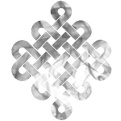





























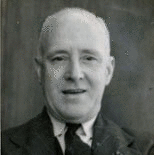



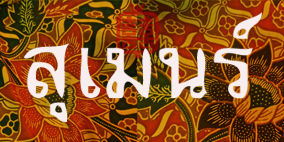


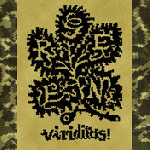


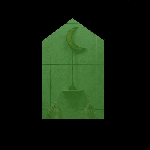
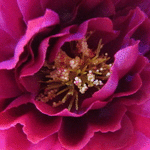

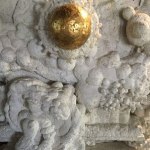


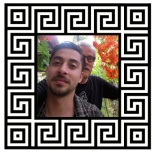

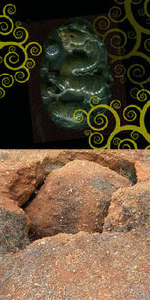
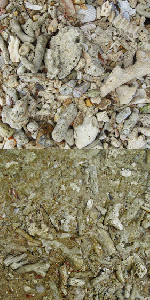
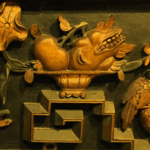

November 10, 2020 at 10.05 |
Good evening Sir I’m a research student. As my topic is caping modesty disc. As not many people are aware of it. And I managed to find your article regarding caping. I hope you will be able to explain it to me. Or share it with me from where you got the source from. I really hope you will be able to guide and help me please. Thank you
Best regards,
Harshini